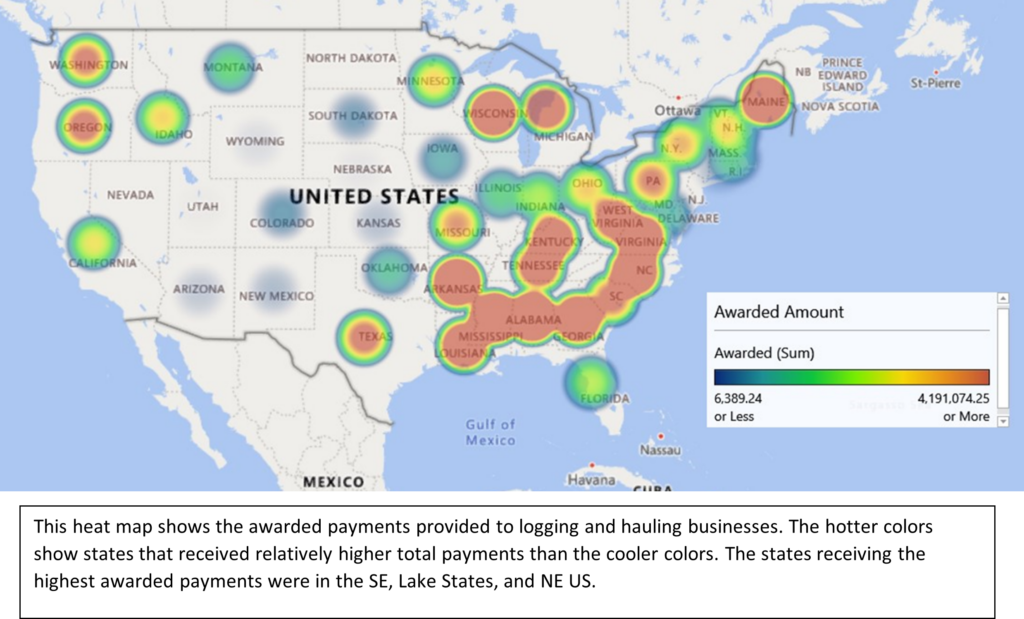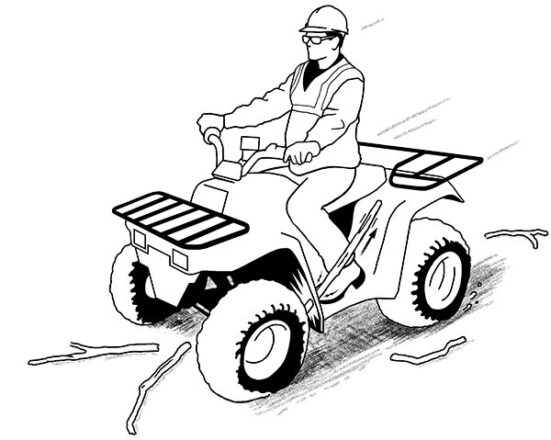PATHH Program Shows Impacts of Pandemic on Logging Sector

In December 2020, the final spending bill provided discretionary funding of up to $200 million for the financial relief for logging and timber hauling businesses harmed by the COVID-19 pandemic. Since this funding was for a new program, the Farm Service Agency (FSA) and the USDA-Forest Service worked to create the Pandemic Assistance for Timber Harvesters and Haulers (PATHH) program. The PATHH program identified which businesses would qualify to receive financial assistance and the criteria these businesses had to meet to be eligible for a financial relief payment. A qualified business had to show a gross revenue loss of 10 percent or greater year on year from 2019 to 2020. Maximum assistance levels were initially set at $125,000 per business. However, due to the overwhelming number of applications received and the amount requested, the maximum amount per business was reduced to $75,000 per applicant. Payments to businesses were made during December 2021.
By the Numbers
The demand for the PATHH program assistance far exceeded expectations and the amount of funding allocated. This resulted from logging businesses struggling because of mill closures and curtailments during the height of the COVID-19 pandemic. Overall, of the 5,608 applications received by the USDA, 5,083 were approved. Most of the businesses, more than 85 percent, were sole proprietorships. Overall, the average gross revenue loss reported was -22 percent when comparing 2019 to 2020. The PATHH program provided financial assistance of $193.5 million of the $200 million provided by Congress. The amount paid out is lower than $200 million due to agency costs of developing and administrating the program and money withheld for those applications that were not approved and are being challenged by the applicant. The total financial assistance requested by the applicants exceeded $375 million, which is $183 million more than the financial assistance made available by Congress.
Timber harvesting businesses received 44 percent, followed by timber haulers, who received 38 percent, and timber harvesters and haulers received 18 percent.
The PATHH program received applications from businesses in 46 states, with Mississippi, Alabama, Maine, Arkansas, and Wisconsin receiving 34 percent of the financial assistance made available through the PATHH program.
What Does This Mean
The number of applications received by the PATHH program shows overwhelmingly that logging and timber hauling businesses were negatively affected by the COVID-19 pandemic. How the logging sector will recover is still unknown, as the industry continues to face workforce challenges, supply chain issues, and high fuel costs. What we do know is that a healthy and viable wood supply chain requires logging capacity to meet consuming mills wood fiber needs. With so many uncertainties, it might be time to reach out to logging businesses and assess the sector’s health at the state or regional level. This assessment is currently taking place in the Lake States Region (LSR) and results will be presented during the FRA Lake States Region Meeting in October.
Resources:
Assessing the Wood Supply Chain
Current Logging Sector Worries




Source: USDA-Farm Service Agency


